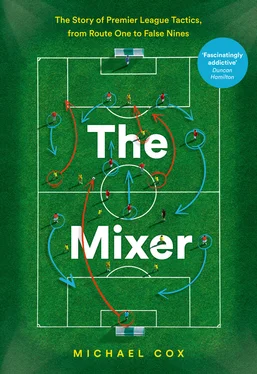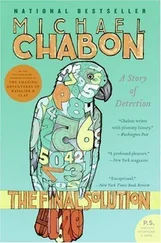In that second season Juninho suffered from fatigue, not helped by Middlesbrough’s double cup run – or by international trips to South America, then an unprecedented problem for Premier League clubs. His biggest problem, though, was man-marking – Middlesbrough didn’t have a Plan B when Juninho was nullified. The most famous example came during the 1997 League Cup Final defeat to Leicester. Two weeks beforehand in the league, Juninho had torn apart the Foxes in a 3–1 victory, so for the trip to Wembley, Leicester boss Martin O’Neill deployed Pontus Kåmark to follow the Brazilian everywhere across the pitch. In a 2011 interview discussing nearly 25 years in management, O’Neill said he’d never sent his teams out to be anything other than positive – apart from that final, when he knew he needed to concentrate on stopping Juninho. ‘If you had seen him a fortnight before running riot at Filbert Street, only a fool would have chosen not to man-mark him,’ he said. Many other managers thought the same; stop Juninho, and you stopped Middlesbrough. Ultimately, it ended with their relegation.
This became a familiar pattern among bottom-half clubs – brilliant individuals who weren’t necessarily conducive to Premier League success. Bolton spent a club record £1.5m on Yugoslav playmaker Saša Ćurčić, who scored one of the goals of 1995/96 against Chelsea, ghosting past five challenges and playing a one-two with Alan Thompson before firing home. Bolton finished bottom that season. ‘I was a crowd pleaser, everywhere the fans loved me,’ Ćurčić recalled. ‘But I wasn’t very good for the team because I wasn’t a team player.’
Another inventive playmaker who scored a memorable solo goal that season was Manchester City’s Georgi Kinkladze – the epitome of a frustrating genius – who demonstrated the dangers of building your side around a number 10. Like Juninho, Kinkladze was recruited after a sensational performance against British opposition, at a time when Premier League scouts rarely looked abroad for new players. Kinkladze was inspirational in Georgia’s 5–0 thrashing of Wales in November 1994, a seismic result; just three years after Georgia had gained independence, it was their first-ever competitive victory. Deployed behind Temuri Ketsbaia and Shota Arveladze in a 4–3–1–2, Kinkladze ran the game and grabbed his first international goal. ‘They murdered us,’ Wales goalkeeper Neville Southall later recalled. ‘Kinkladze was different class and the best player on the pitch by a mile.’ In the return fixture the following summer – four days before Juninho’s performance at Wembley captured Middlesbrough’s attention – Kinkladze again dominated. This time he scored the game’s only goal, an incredible 25-yard, left-footed chip over Southall.
The Georgian was tracked by other clubs, and had unsuccessful trials at both Real and Atlético Madrid – and, intriguingly, a month-long loan at Boca Juniors, who revere the number 10 role more than any club in world football, where Kinakladze met his idol Maradona. None of them signed Kinkladze permanently, however, and instead he joined Manchester City as Alan Ball’s first signing. Ball and Kinkladze’s City experience started disastrously. City collected two points from their first 11 games, scoring just three goals, while Kinkladze struggled; homesick, unable to speak English and living in a Manchester hotel on his own for three months. Juninho was happy in Middlesbrough partly because he’d emigrated with his parents, and Kinkladze’s improvement coincided with the arrival of two Georgian friends and his mother, Khatuna, who brought some home comforts: Georgian cognac and walnuts, and spices to make Kinkladze his favourite dishes.
Kinkladze scored his first goal in November, a late winner in the 1–0 victory over Aston Villa at Maine Road. ‘He was bewildered to start with,’ Ball said afterwards. ‘He spoke very little English and it was foreign to him to tackle and scrap and fight like you do in England. But the boy’s got an immense talent.’ His Premier League spell is best remembered for a couple of truly magnificent goals. The first opened the scoring against Middlesbrough in December 1995, when he collected the ball on the right and dribbled into an inside-left position, before suddenly cutting back inside Phil Stamp and sidefooting the ball firmly into the far corner. Middlesbrough eventually won 4–1, however, with Juninho completing the scoring.
Kinkladze’s other superb strike, later voted March’s goal of the month, came at Southampton. Having already scored the first with a close-range tap-in, and hit the crossbar from outside the box, Kinkladze collected the ball on the right, dribbled directly towards goal while evading four increasingly desperate challenges, dummied to put goalkeeper Dave Beasant on the ground, then lifted the ball over Beasant’s head and into the net. ‘It was the closest thing I have seen to Maradona’s goal against England!’ Ball raved, before somewhat unnecessarily clarifying: ‘Not the one with his hand, the one where he did everyone and put it away. People ask why we are bringing this type of player to this country. If that wasn’t the answer today, nothing is.’
City supporters were already tired of United’s dominance and Cantona’s cult-like status, and they absolutely worshipped Kinkladze – the best Georgi in Manchester since Best. The love was reciprocated; after his initial alienation in Manchester, Kinkladze grew to love the city and married a Mancunian. ‘If he’d been playing with a successful team,’ said striker Niall Quinn at the time, ‘then he would have won Player’s Player of the Year because it’s quite breathtaking what he’s done in English football. He’s a lovely guy as well – I think, because he doesn’t speak a word of English – but he seems nice.’
This was at the height of Britpop, and Kinkladze was rewarded for his fine form with a chant to the tune of Oasis’s ‘Wonderwall’. ‘All the runs that Kinky makes are blinding,’ it ran, before ending with a brilliant: ‘And after all … we’ve got Alan Ball.’ The composer of the original song, City fan Noel Gallagher, also offered a wonderful Kinkladze summary. Describing him as ‘either the most frightening thing I’ve ever seen or the best thing I’ve ever seen’, Gallagher predicted Kinkladze would either lead City to the European Cup, or take them down to the Fourth Division. He was nearly right; when Kinkladze left City in 1998, they were in the third tier.
City were relegated because Ball built the entire team around Kinkladze, as winger Nicky Summerbee outlined. ‘Bally loved him. Georgi could do no wrong – I got on very well with him and we weren’t jealous because we could all see how talented he was, but some hated Alan Ball for doing that – except Georgi, because he loved all the praise … the problem with Georgi was that you couldn’t play 4–4–2 because to get the best out of him you wouldn’t want him playing a conventional running midfield game, and if there are two men wide, that leaves only one in midfield. Ball changed formation all the time, a sure sign he didn’t know what he was doing.’
Keith Curle, then City’s captain, later recalled the extent of the free role Ball afforded Kinkladze. ‘I remember losing away to Arsenal that season and one of the goals we conceded came because Georgi hadn’t tracked a runner. The lads were not happy and some said as much to the manager after the game. In reply, he told them that if they were as talented as Georgi, they wouldn’t have to track back either.’
After City’s relegation, Ball lasted just three games before he was replaced by Frank Clark, who tried a similar approach. ‘I wanted to build the team around Kinkladze because that’s the ideal way to get the best out of him. He’s an incredible talent … [but] he certainly didn’t like running if he didn’t have the ball at his feet and I thought there was a certain amount of resentment towards him from some of the squad.’ Like Ball, Clark ended up changing formation to change Kinkladze’s role. He initially played a 4–4–2 with the Georgian as a deep-lying forward, then switched to 4–3–1–2, fielding him behind a strike duo. ‘We tied ourselves up in knots trying to accommodate Kinkladze,’ Clark continued. ‘The [4–3–1–2] system suited Kinkladze perfectly because it gave him great freedom, but it didn’t suit the other players and it didn’t work.’ Incidentally, Kinkladze switched to number 10 after City’s relegation, having previously worn number 7.
Читать дальше












